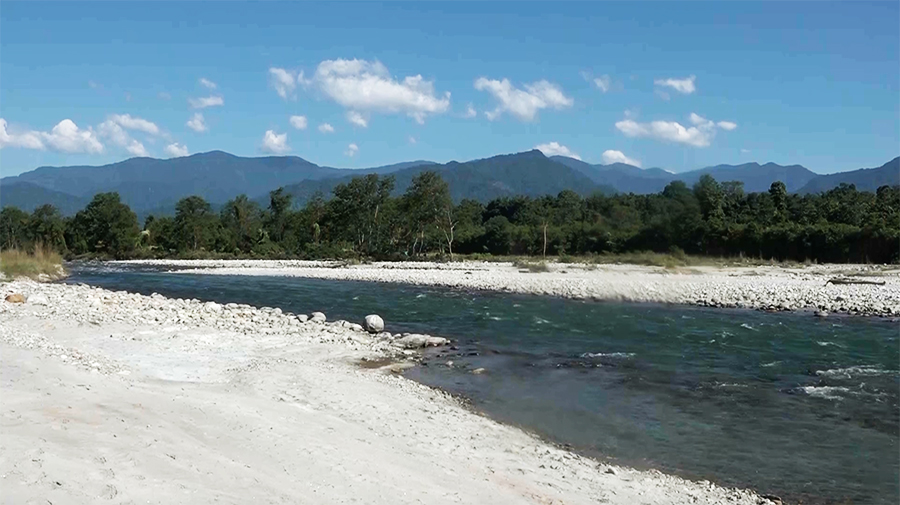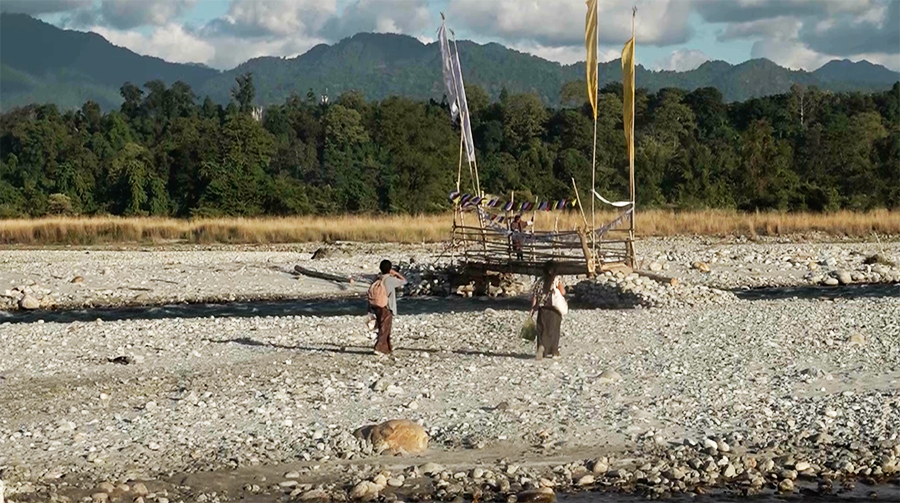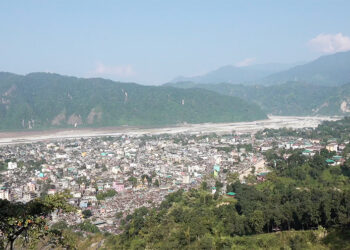 It’s a promise that’s been made not once, not twice, but three times by three different governments. Yet, the people are still waiting. The much-anticipated Mao River Bridge in Gelephu, a crucial link for the community, has remained just that, a promise. But now, there’s finally hope that things might be different.
It’s a promise that’s been made not once, not twice, but three times by three different governments. Yet, the people are still waiting. The much-anticipated Mao River Bridge in Gelephu, a crucial link for the community, has remained just that, a promise. But now, there’s finally hope that things might be different.
Digbhir Khati from Chhuzergang is on his way home after shopping in Gelephu town.
 For decades, people like him have been relying on makeshift bridges to cross the Mao River during dry months.
For decades, people like him have been relying on makeshift bridges to cross the Mao River during dry months.
But when the river swells, they are left with no choice but to take long detours via the Gelephu-Trongsa Highway. And that has been a ritual for people of Chhuzergang, Umling, Tareythang and Serzhong for years now.
With plans to construct the bridge confirmed, people are excited and beaming with hope.
Digbhir Khati said, “I think the bridge construction is definitely happening now. The area survey is done, and a new road has even been built up to Taklai. I am really happy it’s finally taking shape, and I look forward to commuting across the bridge soon.”
Bhudi Maya Tamang, a resident of Chhuzergang Gewog said, “Past governments promised to build the bridge, but it never happened. This time, though, I am quite confident the construction will finally go ahead.”
“Once the bridge is built, it’ll make things so much more convenient for us and we won’t have to worry about encountering elephants anymore,” said Budiman Rai, another resident of Chhuzergang Gewog.
As per the preliminary design, the concrete bridge will be stretching a little over one kilometre.
The construction will cost around nearly USD 59 M.
The bridge will have two lanes of traffic in each direction with a provision for the pedestrian on one side.
The Mao River bridge is one of four bridges to be constructed along the 14-kilometre long Gelephu-Tareythang road project. The designs will be finalised in a meeting with the World Bank next month.
“We started around August 2024 and as of now, we have more or less completed the preparatory report. The first is the environmental and social impact assessment. Second is the feasibility report and the third is the preliminary design,” said Pema Rabgay, the project coordinator of the ACCESS Bhutan Project.
The bridge will be wildlife friendly.
Pema Rabgay said, “Considering the potential impact on the wildlife, especially elephants, the design will consider the wildlife crossings under the bridges. And under the bridges, like for instance, the Mao-khola-zam, which is around 1005 meters, has the provision of elephant crossing of about 250 meters underneath the bridge.”
The six-year project worth USD 300 M will begin in July this year.
Well, it might take another few years, but the wait for the Mao River bridge seems to be finally coming to an end.
Devika Pradhan
Edited by Tandin Phuntsho









